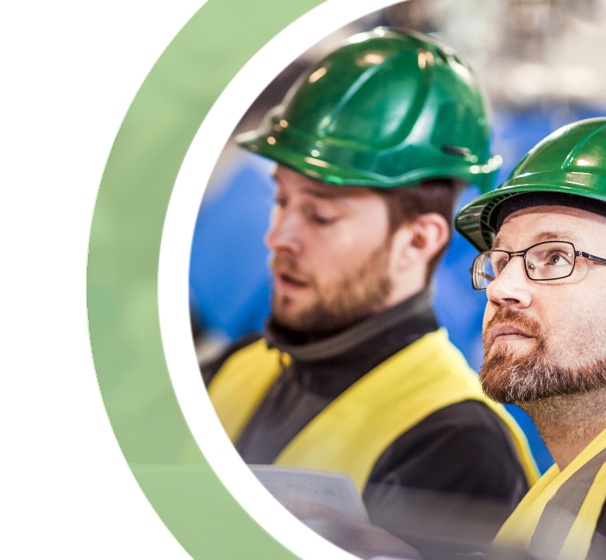Engineers play an essential role in addressing sustainability challenges. They use their skills and knowledge to develop sustainable solutions for the efficient use of natural resources, the prevention of pollution, and the mitigation of environmental risk.
Those with combined engineering and business skills are better positioned to advance in their companies, lead diverse teams, and understand the triple bottom line implications of their work.
Working as an Executive Team in the Lab helps participants see the company as a cross-functional system. By understanding different functional roles, engineers can learn how to make better engineering decisions that support the overall business strategy. This also helps them predict and test the impact of solutions on the business, the environment, and internal and external stakeholders. At the same time, they build and practice business acumen.
Business acumen means balancing the precision of solutions with the insight, knowledge, and sound judgment to make decisions at the fast-paced speed of business. It means understanding how companies operate and how to analyze business reports to assess progress. And it helps you to see the big picture, speak the language of business, and frame problems in the business context to determine effective solutions.
In this Lab, participants work as an Executive Team to integrate sustainability into their products and processes. As they work, they practice how to:

Working together, participants learn new ideas, practice new skills, and discuss new approaches with their colleagues.








The following table describes in detail 3 Lab formats: Half-Day, Multiple-Cycle, and In-Depth.
Labs with longer formats have more options for available features, content, and interactivity.
|
Team Activity
|
Formats for Business Acumen
|
||
|---|---|---|---|
| Half-Day | Multiple-cycle | In-Depth | |
| Design and manufacture a product and make operational decisions. |
1.Select a design and make operational decisions for a product using data about component cost, pollution and energy impact, and customer preferences. |
1.Select a design and make operational decisions for a product using data about component cost, pollution and energy impact, and customer preferences. 2. Make operational decisions, including circularity. |
1.Select a design and make operational decisions for a product using data about component cost, pollution and energy impact, and customer preferences. 2. Make operational decisions, including circularity. 3. Design the product to earn green labels or certifications that align with the company’s business strategy. |
| Market the product. | 1. Create either a storyboard or 30-second video commercial. |
1. Create either a storyboard or 30-second video commercial. 2. Implement sustainability decisions that are aligned with the company strategy. |
1. Create either a storyboard or 30-second video commercial. 2. Implement sustainability decisions that are aligned with the company strategy. 3. Make sure that supply chain performance aligns with company quality standards. |
| Promote the company and product through Social Media. | Not Available. | This is an optional activity described in the In-Depth format. | 1. Post comments about the company and product to the Lab’s internal Social Media feed and comments on the other posts. |
| Engage with stakeholders designed into the Lab. | This is an optional activity described in the Intermediate format. | 1. Consider scripted stakeholder perspectives related to company activities. |
1. Consider scripted stakeholder perspectives related to company activities. 2. Engage interactively with stakeholders played by the instructor via the Lab’s internal email app (optional). |
|
Make leadership decisions for your company. (The instructor selects the topics. For the In-Depth format, we can also create custom topics based on instructor input.) |
1. Make decisions for 1 leadership topic. |
1. Make decisions for up to 3 leadership topics from the following list:
|
1. Make decisions for up to 8 leadership topics from the following list:
2. Make decisions for custom topics (optional). |
|
Propose a solution to a business opportunity related to engineering management.
(The instructor selects the topics. For the In-Depth format, we can also create custom topics based on instructor input.) |
Not Available. | This is an optional activity described in the In-Depth format. |
1. Propose a solution to a business opportunity that relates to course content. Here are some examples:
2. Propose a business solution to custom topics (optional).
|
|
Complete Debrief Questions & Surveys about company, team, and peer performance. (For the In-Depth format, we can create custom surveys based on instructor input.) |
Answer questions and surveys: 1. Business Acumen Debrief Questions. |
Answer questions and surveys: 1. Business Acumen Debrief Questions. 2. Peer Evaluation Survey. |
Answer questions and surveys: 1. Business Acument Debrief Questions. 2. Peer Evaluation Survey. 3. Team Evaluation Survey. 4. Answer custom Debrief Questions or Surveys that we create for the instructor, based on their input (optional). |
| Make a final presentation to the Board of Directors. | Not Available. | This is an optional activity described in the In-Depth format. | 1. Present company business strategy, progress-to-date, and future direction to a volunteer Board of Directors. |
Participants explore topics in greater detail and interactively as time allows.
View this page as a PDF


We're happy to have you join us! Subscribe & receive our latest posts in your inbox. We respect your privacy & never share your information. You can unsubscribe at any time.